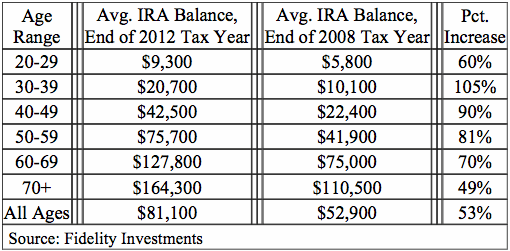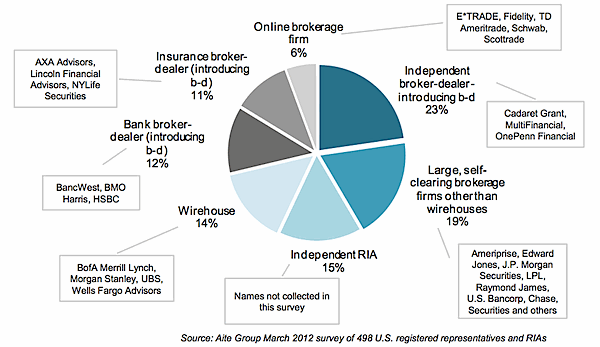The variable annuity was one of the huge success stories of the 2003-2007 period. It attracted more than $1 trillion worth of assets. It made many broker-dealer representatives and independent advisors wealthy. It protected policyholders during the financial crisis.
But its internal design and its business model weren’t sustainable in the volatile, low-interest post-crisis world, even though its Boomer market hasn’t gone away. Most VA manufacturers have pulled back or pulled out. The future of the business is in question.
What will the VA business look like in two to five years? RIJ recently posed that question to people who have advised the largest life insurance companies: a prominent finance professor, a reinsurance expert, Milliman actuaries, McKinsey consultants, and a pioneering product developer.
The big takeaway: The variable annuity product will live on, but its investment-related guarantees will not. Life insurers have lost most of their appetite for writing long-term puts on the equity markets. The VA will survive mainly as a vehicle for risk-managed funds and as a funding tool for life annuities. The good news is that Boomer demand for retirement income products and risk-reducing products isn’t going away.
Ken Mungan, Financial Risk Management Leader, Milliman.
“I think there will be less emphasis on guaranteed living benefits. GLB’s will still be available in the market. But insurers are more cautious now. Even when interest rates come back to more normal levels, there will always be a note of caution in the strength of the guarantees that insurers are willing to provide.
“There is also likely to be more diversification across a range of products, including VAs (with and without GLBs), DIAs [deferred income annuities], FIAs [fixed indexed annuities], SPIAs [single premium immediate annuities], and SPDAs [single premium deferred annuities]. An active focus on product diversification by the senior management teams of the insurers will tend to incrementally reduce VA sales. Companies are looking to be more than just VA writers. They’re looking to see what other products they should focus more on. Across the industry, I see more diversification by companies that were once happy to sell VAs alone.
“Insurers may use the VA to provide retirement-oriented investors with access to risk management [tools], instead of providing a guarantee. I see an interest among VA writers in a product that has no living benefit, but emphasizes the risk management in the funds. This provides access to risk management instead of access to guaranteed income. The product becomes a lot cheaper. The onus will be on the financial advisor and insurer to show the benefits of [this type of] risk management.”
Tim Paris, CEO, Ruark Insurance Advisors, Inc.
“When you look at the rider election rates on point of sale, it’s obvious that the guaranteed living benefits and death benefits have become vital to selling the product. But a lot of companies have lost [money] on the guarantee piece. We’ve seen $2 to $3 billion in charges against earnings across four companies due to changing lapse assumptions. To the extent that this lower level of lapse assumptions has become the new normal, it will affect [VA product] prices and features, which you would think will affect sales.
“In the next phase, we’ll see better management of the policyholder behavior risk, including lapse behavior risk, partial-withdrawal risk and non-elective risks. In 2008 and 2009 companies took big losses on capital markets risk. But over the last one or two years, the big losses have been attributable to policyholder behavior, both as they happen and as companies extrapolate the results to future policyholder beholder. A lot of companies now have a strong interest in actively managing those risks.
“Our clients are direct writers of variable or fixed indexed annuities. Some participate in our experience studies, where they share granular policyholder behavior and we analyze the data and tease out the factors. Others hire us as a reinsurance broker. If it is structured properly, for instance, [reinsurance] companies are willing to reinsure in-the-money death benefits. We try to carve out each risk in isolation.
“Take the guaranteed minimum death benefit, for instance. The GMDB behaves a lot like classic life insurance, and companies want to manage the mortality risk in it. But mortality risk is volatile. There’s a noise in it on a month-to-month basis. That creates noise in the hedging program. We’ve placed reinsurance by carving the mortality risk out of the product. We don’t transfer the capital market risk to the reinsurer. It uses a life reinsurance structure. This is very bespoke kind of work that’s particular to each insurance company.
“Looking ahead, if there’s a way during the product development or risk management process to reinsure some of these [risks] in isolation, issuers will have some pricing validation and shareholders will have more confidence in what’s going on. To the extent that we can use the reinsurance, that may allow companies to get back into the business of gathering assets.”
Casey Malone, actuary, Milliman.
“The life insurers will be in the variable annuity business, but the living benefits may have run their course. They’ve been de-risked so much that even though the current benefits might be OK for the company, I’m not sure how much value they’re providing for the policyholders. The benefit that you’re getting isn’t worth the rider fee. It’s so expensive because companies have to pay hedge costs. Over the long-term, nobody really wins when the company pays hedge costs on a price-neutral bases. The client should look for the investments to be managed to a certain age, and then rely on the insurance company to take on the longevity risk protection. Insurance company shouldn’t be concentrated in market risk protection. It’s not a sustainable idea. It’s too expensive and it’s not necessarily in line with the policyholders’ interests.
“From the standpoint of the fees that you end up paying, the mortality and expense risk fee, the investment management fee and the rider charge, the drag on your account value and your potential upside is just too great. If interest rates were much higher, these products would become cheaper again, but then we’d end up right where we are now. Insurance companies aren’t set up to change their offerings that quickly. Those are just my thoughts. But there are quite a few life insurance companies that stayed out of living benefits, and I assume their management has a similar point of view.
“The GMWB tells a simple story at the point of sale. Being able to summarize the benefit in one sentence—‘You can have 5% for life’—makes it an easy sale. A lot of companies saw the living benefit as a sales inducement rather than the piece that they would make money on. That’s part of the difficulty of replacing them with another product. The story was so good.
“The deferred variable annuity is a good way to fund an immediate annuity or a deferred income annuity. It can allow people to lock in future income over time without putting their money in a fixed account. That’s an attractive idea. It addresses some of the concerns of the policyholder and it’s in line with the life insurers’ expertise. [As far as more issuers getting out of the VA business], I don’t think anybody would want to talk about it until it became a certainty. But it follows from de-risking. Eventually de-risking gets to the point where it makes sense to get out. It’s hard to sell a put to a policyholder. You’re becoming a derivative counterparty to your policyholder and that’s a different relationship from the one insurance companies are used to. I see the New York Life-type product [the deferred income annuity] as the way that we should go, and I hope that we do. But it’s hard to make a prediction.”
Chad Slawner, partner, McKinsey & Co.’s insurance practice
“Obviously a slew of carriers have exited the business, so there’s going to be quite a bit less supply. A lot of it has to do with required capital and capital market conditions, but I don’t see a return to anywhere close to the supply we saw in 2003-2007. There will be no return to multiple carriers selling $10, $15 or $20 billion a year. There isn’t the appetite on the balance sheet for that kind of supply. The demand is still there for retirement income solutions, and there have been some innovations around more floating type or looser guarantees. You’ll see carriers looking to participate in retirement outside of the variable annuity. There’s appetite for fixed annuities, and for insuring risks that aren’t financial. You could see carriers participating more heavily in the health area.”
“The variable annuity wasn’t really a longevity play in my mind. It was a financial markets guarantee. The SPIA is a good long-term solution for longevity risk but it hasn’t taken off with advisors.
“From a financial perspective, the life insurers didn’t do well during crisis. But they’ve been honoring their commitments. In 2009 and 2010, if you talked to advisors who sold variable annuities, they’ll tell you that the product worked as intended. The carriers can capitalize on that. The losses are what people in the press talk about, but if you talk to the executives who run these [annuity] businesses, many of them think a lot of this is just an accounting problem. So it’s premature to say that they’ve ‘blown it.’ On the other hand, they have no appetite to run into this kind of volatility again. Right now they’re trying to steer clear of tight financial guarantees. You see carriers shifting towards group protection products. The story is not over as far as life insurers participating in retirement.
“The variable annuity wasn’t really a longevity play in my mind. It was a financial markets guarantee. The SPIA is a good long-term solution for longevity risk but it hasn’t taken off with advisors.”
Guillaume de Gantes, partner, McKinsey & Co.’s insurance practice
“I agree with Chad. It’s very hard to see [life insurers] going back in. It will be much more about managing the in-force book. Companies that were more balanced in their approach, like Jackson [National Life] or Lincoln [Financial Group], will still be in the market. Then you have companies like Prudential and MetLife whose balance sheets are big enough to keep them in the market. Companies with captive distribution have done better. Ameriprise, for instance, did well during the crisis and they are still active.
“We think mortality [life insurance] as a need is much less important for carriers than it used to be. You have social safety nets and two-income households. But longevity is growing fast. There’s a huge role for life insurers to play there, if not in providing variable annuity living benefits, then in insuring against health-related risks [that are linked to aging].”
Jerry Golden, founder and president, Golden Retirement Advisors.
“I was talking to a successful rep the other day who said that despite having significant AUM [assets under management], his ROA [return on assets] was relatively low. Although not a heavy annuity seller, he recounted a story of how he helped a client exchange a $1+ million VA contract from a company modifying its provisions.
“He went on to say how great these VA’s were great for new reps who don’t have any AUM built up. From a distribution perspective, as long as there’s a demand for risk protection or structured products, certain issuers will continue to manufacture. My issue is that if the fully hedged cost were passed through in product pricing, and illustrations were complete, the product would lose a lot of its appeal. It gets back to distribution and the cost of distribution. When compensation is at historical rates, volatility is high and market interest rates are low, you have this vicious cycle if you try to maintain attractive floors.
“My view is that there is a market for these products, but with different kinds of designs. There will be a market for a low-cost accumulation product coupled with the purchase of guaranteed income—instead of the purchase of derivatives. ‘You buy the cow, not the milk.’
“The other product idea would have no third-party guarantee; the account is simply managed with the objective of putting a floor under your withdrawals. In that case, it’s all transparent: you, the investor, own the hedge position. You can see it. You know its value. And the withdrawal benefit is based on what the market can support, not on what competitors are doing. I happen to own such a product, through a managed account at a firm with expertise in hedging and reinsurance. It was managed for withdrawals to start in five years from the time I purchased it. Because the risks have increased since purchase, I own the increase in the hedge position, and I can either stay and make withdrawals, roll over to another account, or annuitize.
“There will be a continuing demand [for VAs with living benefits] in the marketplace and companies will keep testing to see how they can lower the risk. But at some point the distribution will say, ‘These are not generous enough,’ and then the product may or may not die its own death. On the other hand, the distributors are looking for these types of structured products, so there will be pressure to keep something going.
For some carriers, the distributor will drive the decision, because if those carriers get out of the variable annuity business, they’ll be getting out of the third-party distribution business entirely. It will not be totally driven by what the manufacturer wants. Before a life insurer decides to get out of this business, it has to think about how that will change its distribution. So the death of the business won’t happen immediately, and it will be driven by the combination of factors affecting the distribution and the manufacturers. It’s going to be a challenge.”
Moshe Milevsky, Ph.D., York University.
“New companies are coming into the industry that weren’t exposed to this liability five years ago. They have a clean balance sheet and can offer new guarantees without the emotional and financial baggage. They didn’t sell these products. They didn’t ruin their reputations. A lot of these life insurance companies are still sitting on the sidelines.
“The Boomers still need help with their retirement. The rationale for this business, the justification for this business, is still there. In fact it’s stronger than it was before the financial crisis. And demand will continue to be there.
“People will always want to participate in the upside. ‘Safe’ sounds great when your neighbor is losing money [on risky investments]. But when your neighbor is making a lot of money, safe stinks.
“What I’m seeing now, much more than five years ago, is immense international interest in the subject of retirement income. Five years ago, I was getting my 95% of my invitations to talk about retirement [finance] from the U.S. Now, 70% of my invitations are coming from overseas. They’re struggling with [decisions about] what products people should be buying. I see this as a global issue. Any large, U.S.-based company should be looking overseas.”
© 2013 RIJ Publishing LLC. All rights reserved.





 He says he merely wants to help contract owners realize the value of what they own. And he insists that, by helping VA contract owners get the most value from their contracts—through proper structuring and asset allocation—he’s actually helping the VA issuers.
He says he merely wants to help contract owners realize the value of what they own. And he insists that, by helping VA contract owners get the most value from their contracts—through proper structuring and asset allocation—he’s actually helping the VA issuers. 



